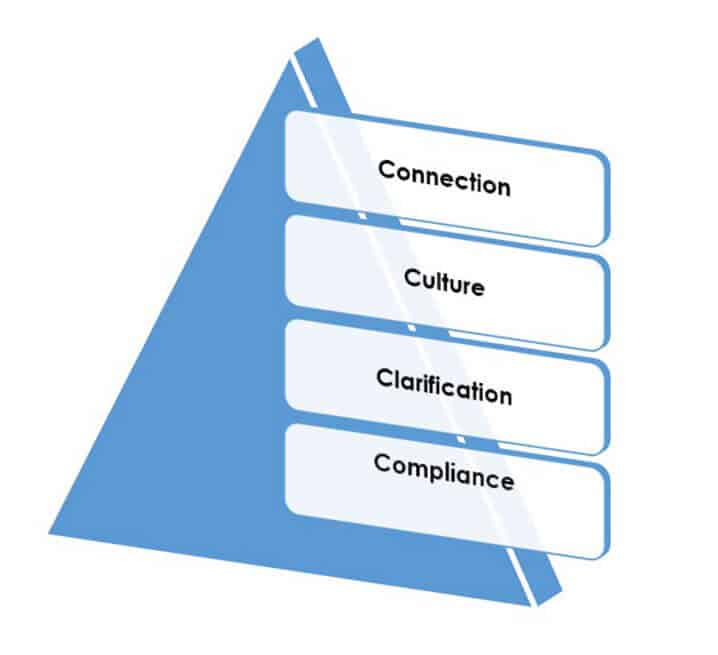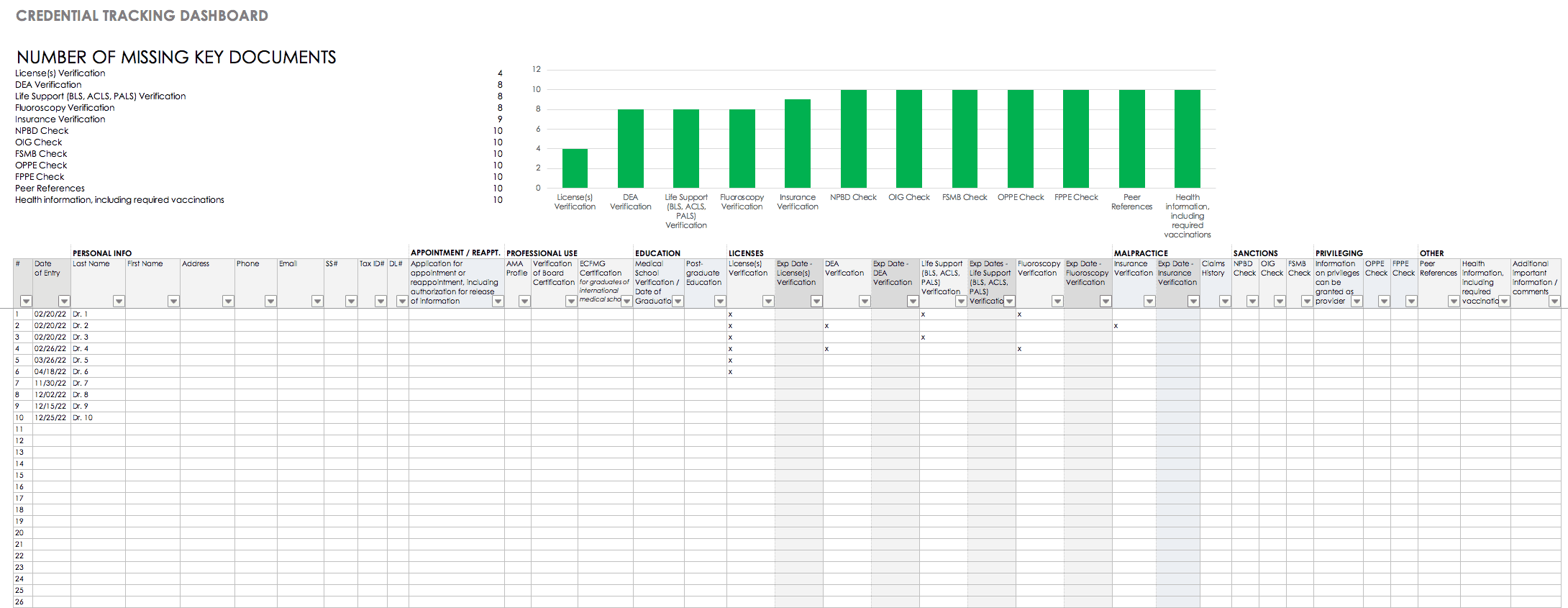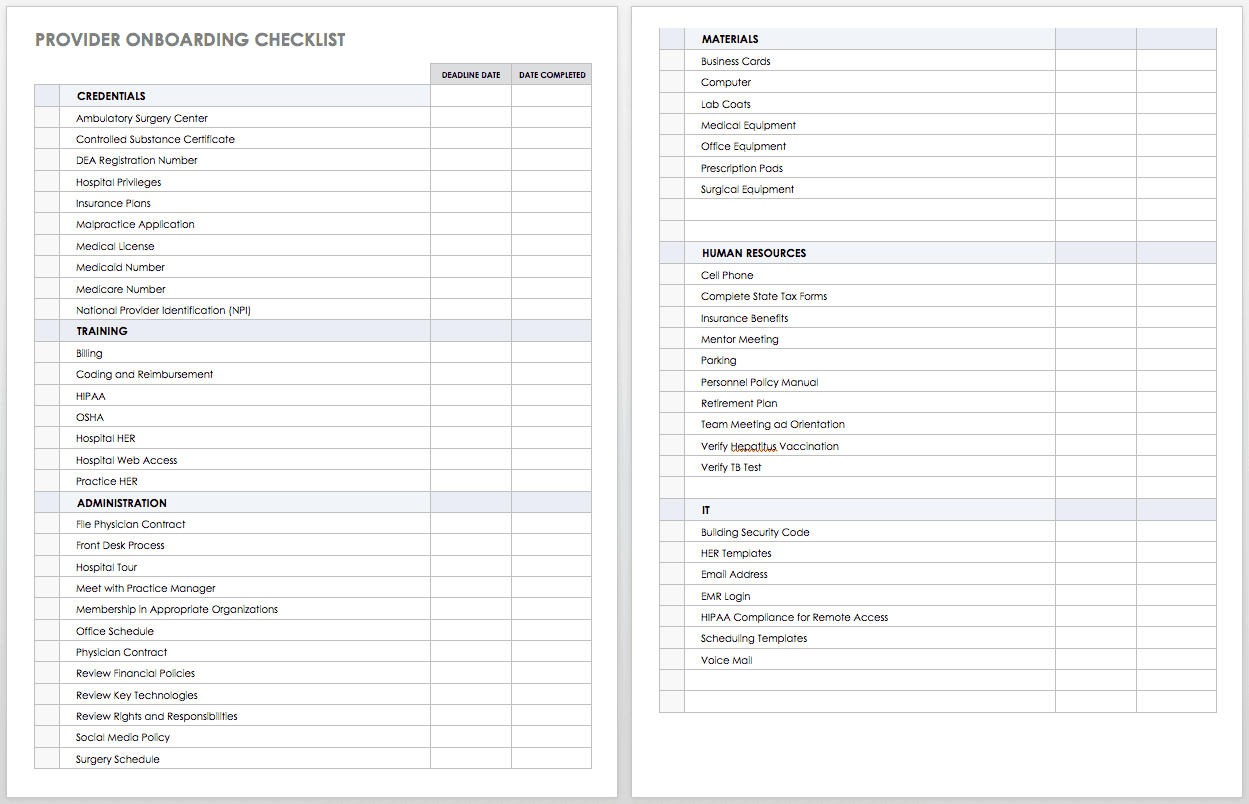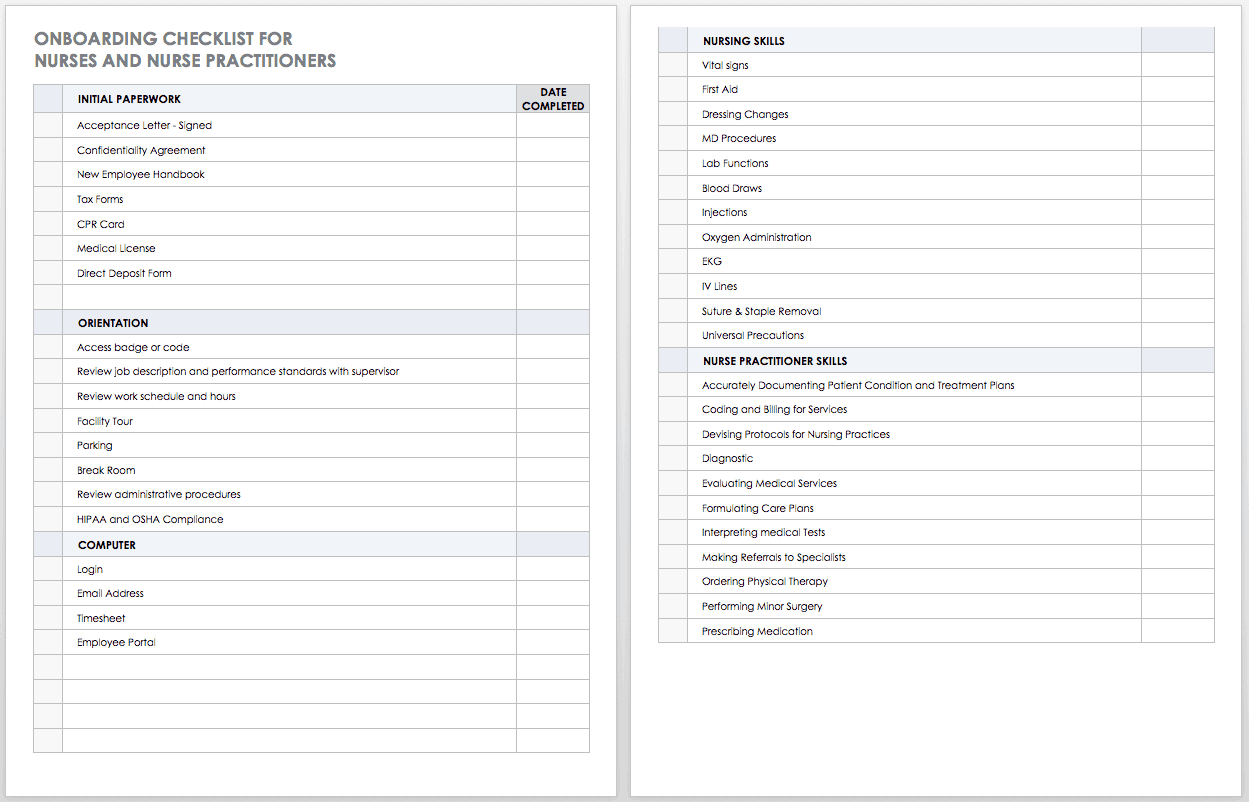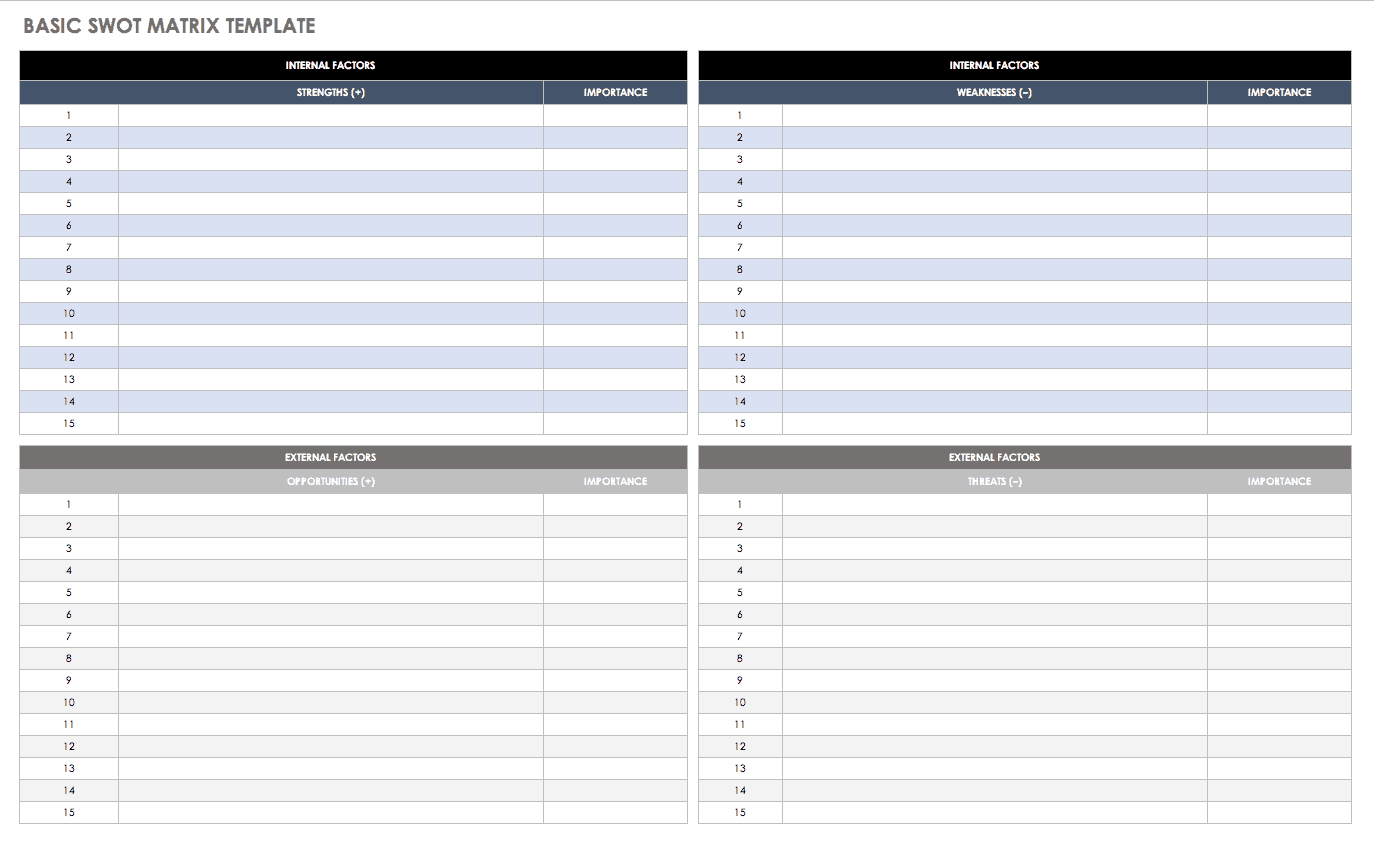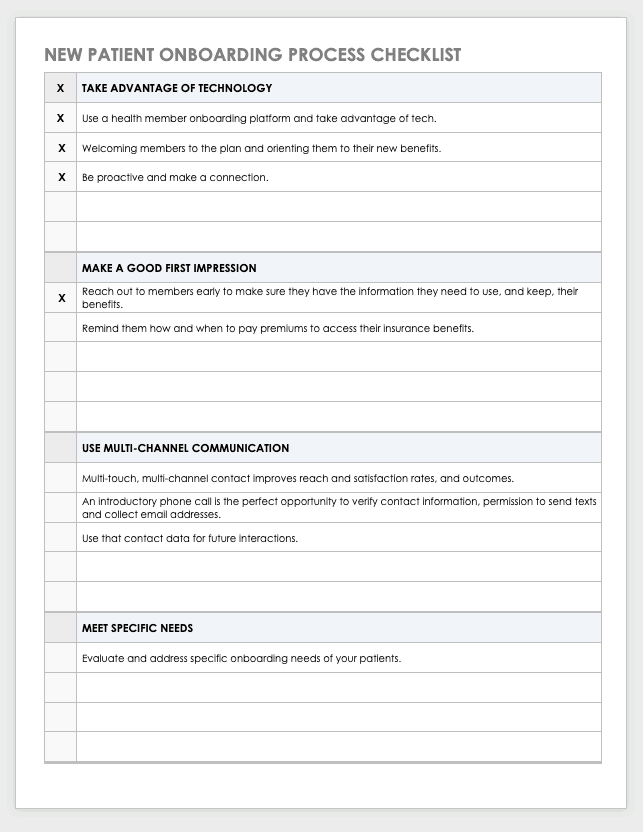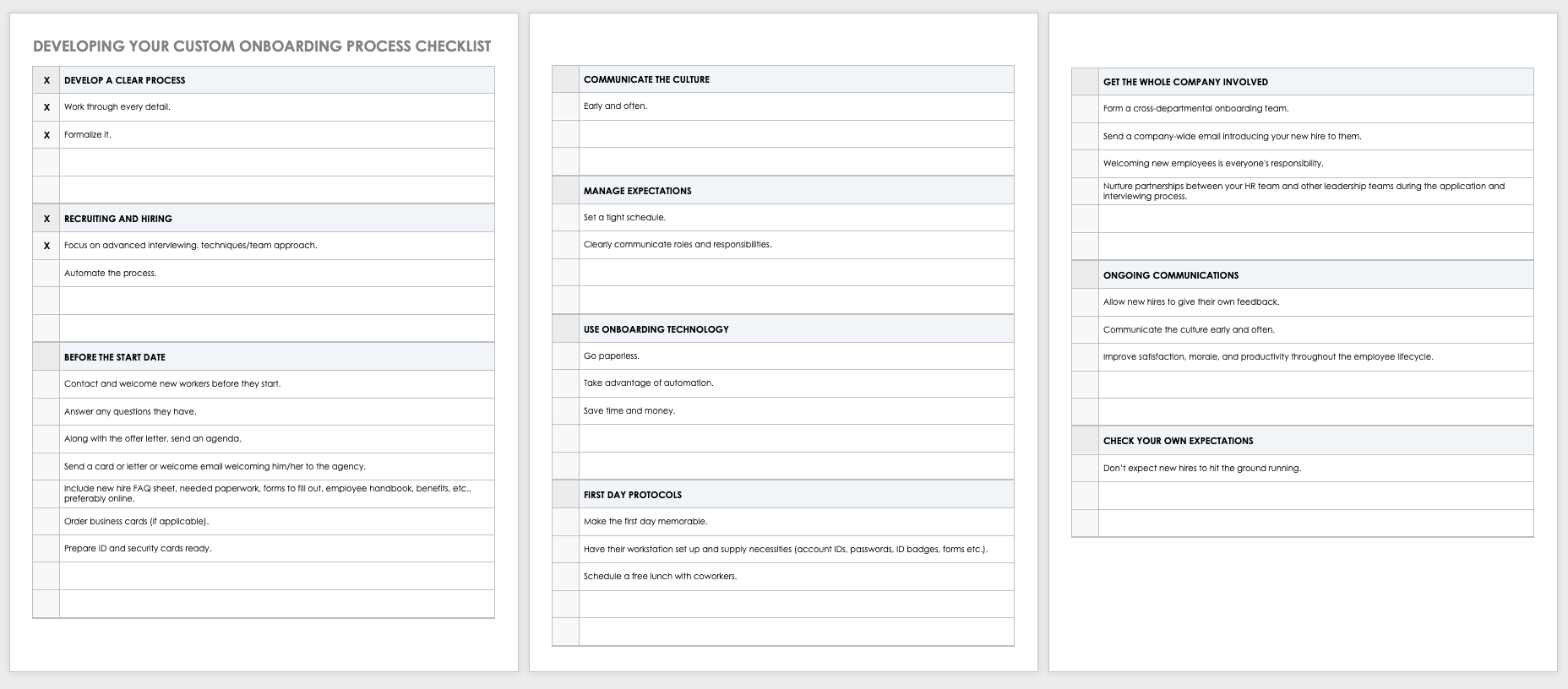What Is Healthcare Onboarding?
Similar to onboarding in other industries, healthcare onboarding or organizational socialization is about recruiting people, helping new hires understand their role and the organization’s rules and regulations, and ensuring a productive and successful work experience for employees. Team members who move into new jobs from other parts of the organization can also be onboarded for a smooth transition into their next role. For more information about structuring your onboarding process, read “The Complete Guide to Employee Onboarding from HR Experts.”
Why Is Healthcare Onboarding Necessary?
Onboarding can’t solve all challenges in healthcare, but it can go a long way in addressing the three main crises in the current employment environment.
The first crisis is compliance. Healthcare is one of the most regulated industries in the United States, and despite stringent laws that have been in place for decades, many healthcare providers have much work ahead of them before they attain compliance. Meeting regulatory standards is vital to patient health and safety, as well as to protect the organization from fines and litigation.
As Woodward points out, “Operating without targeted onboarding compliance strategy and tactics exposes healthcare organizations to significant legal and financial risks.” In 2018, violations by multiple insurance or health provider organizations resulted in multi-million-dollar fines — in fact, Anthem, Inc. paid a record-breaking $16 million for violating patient privacy rules.
To overcome compliance challenges, healthcare employees need to understand patient information and safety regulations, including the Health Insurance Portability and Accountability Act (HIPAA), protected health information (PHI) and medical records, and the Occupational Safety and Health Act (OHSA).
The second crisis is the shortage of healthcare professionals in all types of medical positions: physician, nursing, diagnostic, and more. Because of this issue, it’s essential to attract and satisfy staff and, thus, offset the third crisis facing the industry: retention. Staff shortfalls and the cost (both in time and money) to find and replace those employees can damage finances, morale, and patient care.
These crises are happening at a time when there’s was more job growth in the U.S. healthcare sector than in any other industry. The Bureau of Labor Statistics projects that job openings in healthcare will rise 18 percent by 2026, much faster than the average for any other occupation. The talent needed to fill these complex jobs must integrate quickly. It’s also expensive — according to a 2017 Deloitte survey of hospital CEOs, between 45 and 60 percent of healthcare operating costs goes toward labor.
Due to the talent shortfall, doctors, nurses, radiologists, and others can afford to be selective about where they work and whether to stay at their present position. Onboarding can help forward-looking healthcare hospitals, systems, and related organizations attract and keep staff in a competitive environment.
Benefits of Healthcare Onboarding
If a new hire comes away from a smooth onboarding process with a positive first impression, the transition to the job — and to the vital work of patient care — will be faster.
“Despite the benefits, most healthcare organizations aren’t quite where they need to be with onboarding, particularly in making use of online solutions,” says Woodward. “That’s what we help to do: Forge an individual’s connection to the organization. When people can quickly and easily access information and assistance, it can make all the difference between job satisfaction and an early departure.”
Strong healthcare onboarding provides multiple benefits:
-
Commit to ongoing improvement. Onboarding is an integral and continuous part of the employee lifecycle and can make a difference in staving off attrition. With medical knowledge doubling every few months, it’s important to stay up to date. That’s why the onboarding journey can take weeks (sometimes even months) and can vary according to the provider's position for practitioners who need ongoing training. For example, practitioners in remote patient monitoring, imaging technology, or oncology may need frequent training updates.
-
Enhance performance. To address the need for lower-cost, higher-quality care and improved patient experience, provide innovative training programs for employees to drive organizational change.
-
Foster employee loyalty through enculturation. Onboarding is a prime opportunity for healthcare organizations to win the hearts and minds of new employees. When you enculturate talent through skillful socialization, people who begin as outsiders quickly become insiders who have a stake in the company. This happens when talent understands how their daily work contributes to the larger organizational mission.
-
Impact the bottom line. Controlling expenses is mandatory in both nonprofit and for-profit settings. Hiring qualified staff is one of the most expensive investments that clinics and hospitals can make: According to the 2016 National Healthcare Retention and RN Staffing Report, an average hospital can lose $5.2 to $8.1 million annually due to nurse turnover. On the plus side, in 2016 the Human Capital Institute (HCI) found that onboarding improves new hire retention by 82 percent and productivity by more than 70 percent. In the same report, retention after three years was 58 percent more likely when new employees went through a structured onboarding program.
-
Support success. Make sure that staff understand the ins and outs of compliance. In addition, be clear about expectations, provide feedback, and help employees maintain or gain external licenses or certifications. Doing so helps your people commit to their work and your organization.
Challenges to Effective Onboarding
Resistance to change is natural, and it’s no different in healthcare. Whether instituting a formal onboarding process from scratch or building transformational change in delivery strategies, change can be challenging.
As such, barriers to healthcare onboarding can include the following:
-
Changing Models of Care: The Patient-Centered Medical Home (PCMH) transformation is an approach to providing comprehensive primary care for children, youth, and adults to ensure better-coordinated and personalized care with improved access to treatment and services. PCMH facilitates partnerships between personal physicians, individual patients, and when useful, patient family members. It requires extensive onboarding and education for practitioners to transform traditional practices into this revolutionary approach.
-
Excessive Overhead: Simplify and streamline the onboarding process by using an online portal for forms, and handle requirements ahead of time, including health requirements, drug screenings, and certifications before employees can begin work.
-
Lack of Management Buy-In: You can make a business case for onboarding (it saves money and time), but some CEOs may not get that memo. Without CEO endorsement, the onboarding process can come to a stop before it even begins. Ease organizational roadblocks and present the benefits based on the talent crisis to gain support.
-
Limited Bandwidth: Those who manage the onboarding process, including human resources and department heads, likely have many other projects on their plates. Automation and dedicated online portals can streamline onboarding processes, including paperwork, orientation, training, and reminders, thus relieving the load for team members and new employees.
-
Poor Execution: Poor planning and execution may lead new hires to conclude that the organization is badly managed — and even decide it was a mistake to take the job.
-
Tight Job Market: If you’re short on staff and need people at work immediately, it can be tempting to bypass onboarding. The lack of onboarding can cost you time and money in the long run, due to job dissatisfaction and resulting turnover.
-
Your Organization Isn’t Well-Known: Candidates might not be aware of your health center. Get on social media, activate your PR, go to employment fairs, and give employees bonus incentives to spread the good word and bring in qualified candidates.
The reasons above illustrate why you need a clear plan for providing best-in-class onboarding to everyone in your healthcare organization. For more ideas and tools, read “The Advanced Guide to Customer Onboarding.”
Onboarding Is Important for Everyone in Healthcare
Return on investment (ROI) is significant, but what does it mean for your organization? Money is the usual measure, but how you calculate ROI depends on organizational values, such as physician and patient satisfaction, time to productivity, and retention rates. You may combine several variables. Uncover what your organization values most, and prioritize those standards as you develop your onboarding strategy.
Also consider what is meaningful to your employees. Healthcare professionals have stressful jobs, and burnout is exceptionally high in most healthcare-related posts. In a 2017 paper published by the National Academy of Medicine, researchers found that 50 percent of doctors and nurses suffered from burnout at a rate twice that of workers in other fields. All of this pressure results in high turnover.
But onboarding can make all the difference to staff retention. “Onboarding does take an investment in planning, time, and expense — and it’s worth it,” says Woodward, “because it lowers the incidence of turnover.”
For example, the 2017 study “Reducing Annual Hospital and Registered Nurse Staff Turnover — A 10-Element Onboarding Program Intervention” found that implementing a strategic plan reduced turnover by 50 percent.
From maintenance techs to surgeons, everyone should be brought in with care to reduce the cost, stress, and other issues caused by lack of or poor onboarding. You can think about creating your onboarding process by fulfilling four areas described below.
The onboarding process builds knowledge, skills, and behavior over time, with the goal of forging a strong sense of connection to the organization and its people. Below are the four components of healthcare onboarding:
-
Connection: Connect new hires to personal relationships, information networks, and organizational mission.
-
Culture: Bring new hires into organizational values and norms.
-
Clarification: Help new employees understand their role and related expectations.
-
Compliance: Teach new and existing employees about regulations at the federal, state, and organizational level and policy-related issues.
Overall Onboarding Processes for General and Specific Staff
Every clinic, hospital, or other healthcare-related concern should create an onboarding process. When you have a clear process for every step, candidates and employees know what to expect, which increases their satisfaction. Continuously review and update the process as you learn from experience, by your metrics, and from employees and other organizations.
To help you get started on your own onboarding process, here are some general process steps, timeframes, and examples of activities:
-
Pre-Hire: Before the team member comes to work, make sure they know their hire is official and send a welcome letter. Take care of initial documents, background checks, and other verifications online before the first day on the job, preferably in a paperless mode.
-
Initial Impression: During the first days on the job, the individual should have a formal orientation to understand what’s expected of the position. At this internal training, they should learn about internal processes, the company and its mission, and compliance requirements, as well as how to use the employee onboarding portal (a tool every healthcare organization should have). If possible, assign a mentor to support the employee.
-
Integration: Starting 60 to 90 days in, leaders should engage with the new hire to understand progress and hear questions and concerns. During the same period, the hire should complete any ongoing competency or other requirements. At three months, you should hold an evaluation process that includes two-way feedback.
-
Inclusion: Between four and six months on the job, the new staff member should be involved in rounding, a practice in which leaders make rounds and discuss what is and isn’t working with their team. This helps identify areas of improvement and build relationships. Additionally, the new staff member may need to attend certification courses at this time.
-
Engagement: At the one-year mark, employees should be moving forward on internal networking and professional development, as well as have their annual performance review.
-
Offboarding: This step is important to foster goodwill and build your organization’s reputation. Have an official process to complete forms and return items, as well as gain an understanding of the employee’s experience and why they’re leaving. Use this information to improve the onboarding process in the future.
For maximum effectiveness, design the onboarding process based on the organization’s needs, priorities, and culture. Learn more about customizing your process steps with “Employee Onboarding Processes: Plans, Best Practices, Flowcharts.”
Onboarding solutions and portals create a more efficient, engaging, and responsive way to energize new employees as they join the team. Online solutions are a vital component of effective onboarding, and they speak to the way people communicate and socialize today. Think about using video to inform and train employees, particularly in compliance areas.
Onboarding is also an easy way to apprise busy medical professionals of upcoming deadlines. “Credentialing must be kept up to date,” notes Woodward. “This is where a technology system with tracking, reminders, communication, and other tools can make a difference. It can positively affect morale and overhead with automation that brings greater control to every process.”
Credential Tracking Dashboard Template
Use this accreditation dashboard to document what type of and how many key documents are missing, when accreditations expire, and any outstanding professional documentation. The template also allows you to identify the individuals who will receive a reminder and check off the item when it’s delivered.
Download Credential Tracking Dashboard — Excel
Healthcare Provider Onboarding
Physicians often leave their current organization because they aren’t aligned with the culture and may not understand how and why decisions are made. “You do want to ensure that experienced providers, who bring incredible skill and art to care, don’t move on,” says Woodward. “This is where the right kind of onboarding can make a major difference for the clinic or hospital and to patients.”
However, the new emphasis on electronic medical records can be a stumbling block. “Seasoned physicians can feel that using EMR is a hindrance and takes away time from interacting with patients,” Woodward continues. “Using technology can be a boon or a burden. For physicians who have been in the field for a while, it may take some extra time in onboarding to make them comfortable and proficient.”
In the white paper “Setting Up Your New Physician for Success,” author Cheryl L. Toth offers 10 tips for physician onboarding.
According to data from 2015, formally onboarding physicians is considered a best practice for the following reasons:
-
Cost of Physician Turnover: The American Journal of Medical Quality found that the loss and replacement of a primary care doctor starts at $250,000.
-
Mentoring Drives Lower Turnover: By providing a guide to help new hires navigate their healthcare job and overall environment, organizations lower the overall rate of turnover. Mentoring lowered the average turnover rate from 6.8 percent to 6.0 percent.
-
Positive Effects: Engagement and satisfaction, direct report satisfaction, safety and quality metrics, and organizational alignment are all linked to strategic physician onboarding.
-
Think Long-Term: A longer onboarding process for physicians results in lower turnover rates in the early years of their practice. In onboarding that lasted one year, turnover rates drop to 10.5 percent vs. 12.5 percent between years two and three.
-
Turnover Rate: The most recent data available (from 2015) found that the family and primary care physician annual turnover rates was 14 percent.
Use this template as a starting point to develop your own provider onboarding checklist:
Download the Sample Provider Onboarding Checklist
Physician Information Template
Once you onboard your physicians, you’ll want to keep track of all their information, certifications, compliance training, and more. Use this flexible template to take charge.
Download Physician Information Template – Excel
Healthcare Onboarding for Nurses and Nurse Practitioners
The cost to onboard a nurse — thereby averting their departure — is far lower than the cost of hiring and training a new nurse (the latter can range from $37,000 up to $58,000). In the United States, the need for providers in specialty areas, such as nursing, is rising because schools have a limited number of spaces for enrollees just as most communities have an increasing number of openings. As a result, there will be a shortfall of 1.2 million nurses by 2022.
“Nurses who are on the front lines of care, particularly in hospitals,” explains Woodward, “have more pressure in their positions and opportunities to move because of the nursing shortage. Feeling more at home and part of the team via onboarding can help with retention.”
She continues, “For nurses in particular, teamwork is an essential part of job satisfaction, and that’s where a good onboarding process can make the difference between job satisfaction and moving on to other opportunities.”
Onboarding Checklist for Nurses and Nurse Practitioners
The process for onboarding nurses and nurse practitioners varies, depending on the healthcare setting and its requirements. This flexible checklist template can help you organize the necessary steps to help your new staff members get off to a good start.
Download Onboarding Checklist for Nurses and Nurse Practitioners
Excel | Word | Smartsheet
Nurse practitioners (NPs), also known as advanced practice providers, require unique onboarding. In Development of an Advanced Practice Provider Onboarding Structure, author Amy Ziegler notes, “Advanced practice providers (APPs) are highly sought-after healthcare providers licensed and board-certified to care for patients in a variety of settings. If a newly hired APP is dissatisfied with the orientation and onboarding process, there is a high likelihood of that individual leaving the organization.” She offers ideas about unique approaches to NP onboarding based on her research in a northern California practice.
If you’re working on a new onboarding plan, you may want to use a SWOT (strengths, weaknesses, opportunities, threats) analysis to assist in your decision making. Here are some points to consider, using onboarding as an example:
The first step is to have a clear SMART (specific, measurable, achievable, realistic, time-based) objective and be sure that stakeholders agree with the goal. From there, you can perform a SWOT analysis:
-
Strengths: Factors that are likely to have a positive effect on your objectives for recruitment and retention
-
Weaknesses: Factors that are likely to hurt achieving your objectives for recruitment and retention
-
Opportunities: External factors that are likely to have a positive effect on meeting or exceeding your recruitment and retention goals not previously considered
-
Threats: External factors and conditions that are likely to hurt achieving or exceeding your recruitment and retention goals or pushing the goal out of reach
SWOT Template
Use this basic SWOT Template for all of your onboarding or other goals. It’s easy to see, share, and collaborate to find the path forward when you have all your options and barriers in one spot.
Download SWOT Template
Excel | Word | PDF | Smartsheet
New Patient Onboarding
In the healthcare industry, your patient’s first encounter with your facility is a decisive moment. Healthcare is personal and often invasive, so do whatever you can to put people at ease. The onboarding process is a good place to begin, and with patients, much of that has to do with making sure their insurance is in order. Patient onboarding also involves registering new patients and orienting them within your hospital or clinic.
Do things their way. Be efficient and mimic the manner in which patients communicate and interact online. Send texts and emails. Patients will appreciate the convenience that technology provides while in your care as they do in every other facet of their life.
To improve the patient experience, use this checklist to develop your onboarding process:
Download New Patient Onboarding Process Checklist
Onboarding Best Practices
Streamline your onboarding process with a technology solution to more quickly and effectively bring on new employees.
“Human resources is often where the responsibility for oversight of credentials lives,” Woodward says. “With software like Smartsheet or other systems, tracking, communications, and reminders are automatic. Software significantly cuts down management time, so human resources can focus on other priorities: staff.”
Based on the experience of successful healthcare organizations, here are some overall principles to consider:
-
Communications: Start the conversation before the first day of work. Set goals and expectations, and stress compliance. Also, take advantage of an online portal to increase competencies and skills.
-
Culture: Concentrate on what’s good and unique about your culture, and state your values. Nurture a connection to the mission and to coworkers. Be honest and transparent about the culture, and don’t leave new hires to figure out how things work. For instance, be clear about the preferred communication mode (meetings, email, phone, etc.), about how decisions are made, and when workers can make decisions on their own.
-
Develop Sourcing: By creating and nurturing a qualified pool of healthcare candidates for current and future positions, top managers get the right people into the right jobs. They use planned and structured approaches when interviewing, and ask questions to gather data that allow them to objectively compare candidates and make the best choices. Once the right people are on board, the manager’s attention shifts to retention.
-
Mentorship: Designate a point person or mentor, in addition to the supervisor, who can welcome and orient the new staff member to the organization. Make sure the mentor has specific tasks to cover for the first day, week, and three months.
-
Relationships: Invest in career development for the team. If people let you know that they’re thinking of leaving, try conducting stay interviews to repair or strengthen the relationship. Make offboarding a part of your regular practice. For information about offboarding, read this article.
Tips to Develop Your Custom Healthcare Onboarding Process
Healthcare Onboarding Resources
Below is a list of books and web pages with healthcare-specific onboarding resources:
-
Bradt, George B., and Bancroft, Ed. The Total Onboarding Program: An Integrated Approach to Recruiting, Hiring, and Accelerating Talent Facilitators Guide Set (1st Edition). New York City: Pfeiffer, 2010.
-
Bradt, George, and Vonnegut, Mary. Onboarding: How to Get Your New Employees Up to Speed in Half the Time. Hoboken: John Wiley & Sons, Inc., 2009.
-
Heath, Chip and Heath, Dan. The Power of Moments: Why Certain Experiences Have Extraordinary Impact. New York City: Simon & Schuster, 2017
-
MSDS Online, OSHA’s Top 10 Most Cited Violations of 2018, accessed 4 march 2019, https://www.msdsonline.com/2018/10/23/oshas-top-10-most-cited-violations-of-2018/.
-
Your Dictionary, Examples of HIPAA Violations, accessed 4 march 2019, https://examples.yourdictionary.com/examples-of-hipaa-violations.html.
Improve Medical Onboarding with Smartsheet for Healthcare
Empower your people to go above and beyond with a flexible platform designed to match the needs of your team — and adapt as those needs change.
The Smartsheet platform makes it easy to plan, capture, manage, and report on work from anywhere, helping your team be more effective and get more done. Report on key metrics and get real-time visibility into work as it happens with roll-up reports, dashboards, and automated workflows built to keep your team connected and informed.
When teams have clarity into the work getting done, there’s no telling how much more they can accomplish in the same amount of time. Try Smartsheet for free, today.

